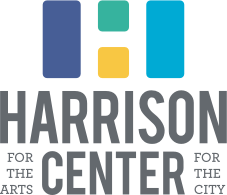Cookies, Coffee and Community
At 3PM sharp, neighborhood children flocked to the back door of Omar's Bakery. Walking away with bags of broken cookies, they'd skip across the street to get milk, all given for free from neighbor to neighbor. In the heyday of the Martindale-Brightwood area, before the interstate came, the community thrived. Veteran HCA artist William Rasdell lived on 16th and Bellefontaine from 1951-'55, and speaks with pride of the local businesses, movie theaters, grocery stores, and collective spirit of neighborliness. He recalls Indianapolis as being in the highest percentage of black home-ownership, plentiful with job opportunities, and less racially divided than it is today. While Rasdell applies no direct inspiration from this experience to his art, his interest in forced migration prompting cultural change draws distinct parallels to the effect of the interstate on his childhood home.
"It wasn't an accident, a great deal of the downfall of the inner city community is a result of the interstates and the way the interstates were designed to break up communities, and isolate communities, and to create these desert areas [which] become blighted. So it wasn't an accident, it was very much in the plan from early on ... If you have a thriving neighborhood and they come in, tear down most of the houses, and put in a block between here and there, you've disrupted the community, you've displaced people, you've displaced jobs."
The interstate changed everything. Obstructing businesses and bisecting neighborhoods, the new highway was an outsourced, presumptuous change that dismantled the community and stripped it of its resources. The once lively and friendly neighborhood now qualifies as a "food desert" and struggles with poverty and prejudice.
The Pre-Enactment Theater project hopes to revitalize this neighborhood, and invites the community to imagine what this area could become. The fall of the neighborhood was rooted in outsider intrusion, so the Harrison Center is working with local community members to start this project from within. Rasdell is hopeful of this program's potential, and believes that as long as they work to be, "consciously inclusive, ... anything that expresses the intent of including people's ideas and taking into consideration people's concerns, I think that's a good idea."
Omar's Bakery may no longer be in business, but at 4PM on school days, a new generation of kids migrate to the local coffee shops. They may have started as outsiders, but in attending school at Herron, they feel a sense of ownership for this area. And be it cookies or coffee, it's a step closer to community.
by Isabelle Matthies, high school intern


